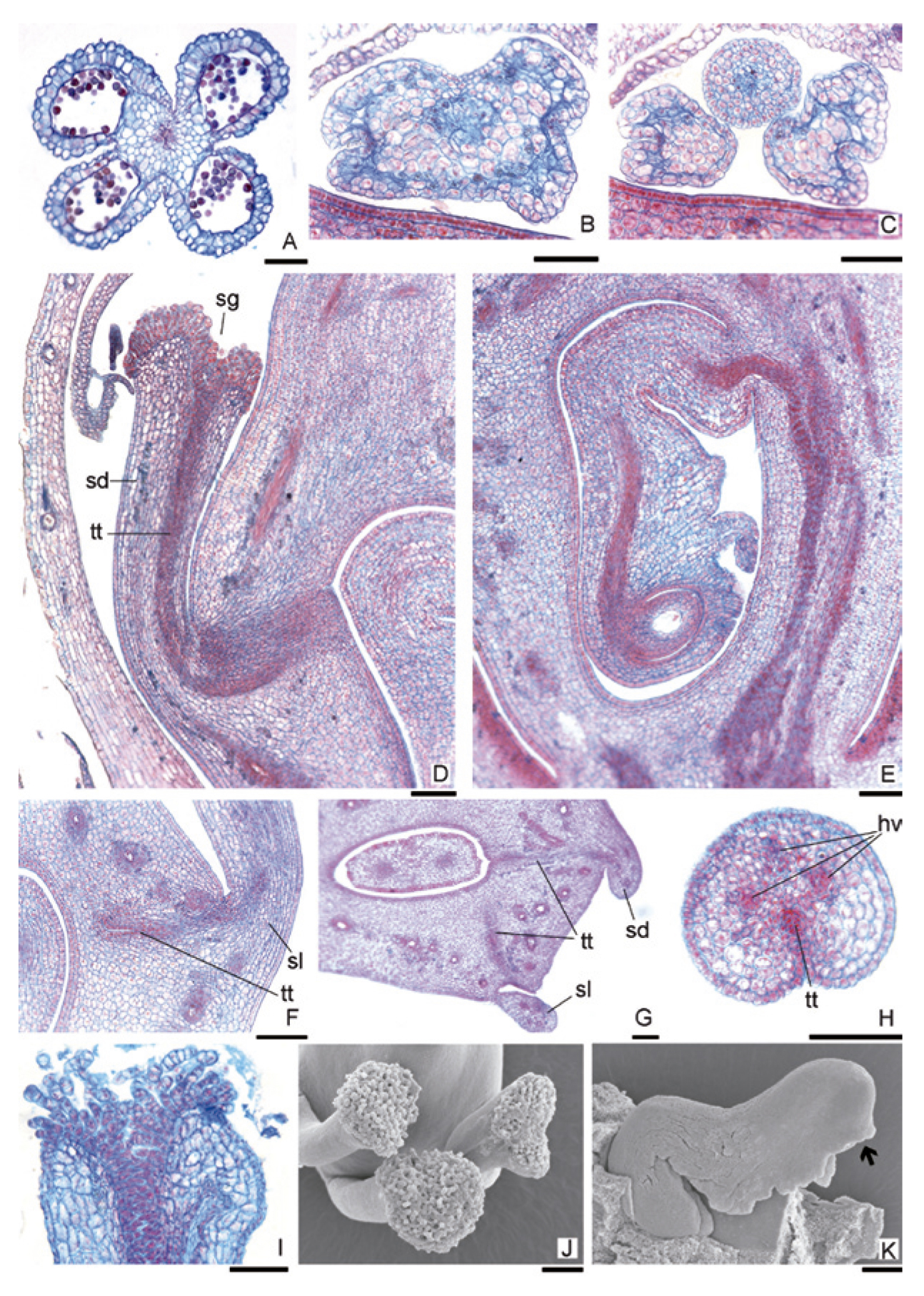Floral morphology and anatomy of Schinopsis balansae (Anacardiaceae)
Keywords:
dioecy, staminoids, flowers, nectary, Schinopsis balansae, vascularizationAbstract
A morphological and anatomical analysis of Schinopsis balansae Engl. was performed, using optical and scanning electron microscopy. The main objective was to obtain data from the flowers of this species, usually described as polygamous-dioecious. The results shows that the flowers described as functionally perfect are structurally pistillate; although have five staminoids, they are smaller and lack sporogenous tissue. In the staminate flowers, the structure described as vestigial pistil is the excrescence of the apex of the receptacle, covered by nectariferous tissue. Thus, it is right to describe S. balansae as dioecious species. The study of the vascularization of male flowers shows that the reduction process is complete, since not even the vascular traces for the pistil persists. The gynoecium of pistillate flowers is pseudomonomerous with one functional carpel, one ovule and one dorsal style and stigmata, and two vestigial carpels, represented only by individual lateral style/stigma. Both types of flowers present an intrastaminal nectary disc, with nectarostomatas for nectar release. The analysis of the anatomic structure of S. balansae provides data that are consistent with those found in other studied genus of Anacardioideae group in the Anacardiaceae family.

Downloads
Published
Issue
Section
License

This work is licensed under a Creative Commons Attribution-NonCommercial-ShareAlike 3.0 Unported License.
Aquellos autores/as que tengan publicaciones con esta revista, aceptan las Políticas Editoriales.


